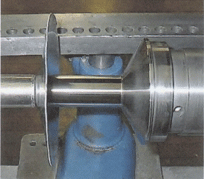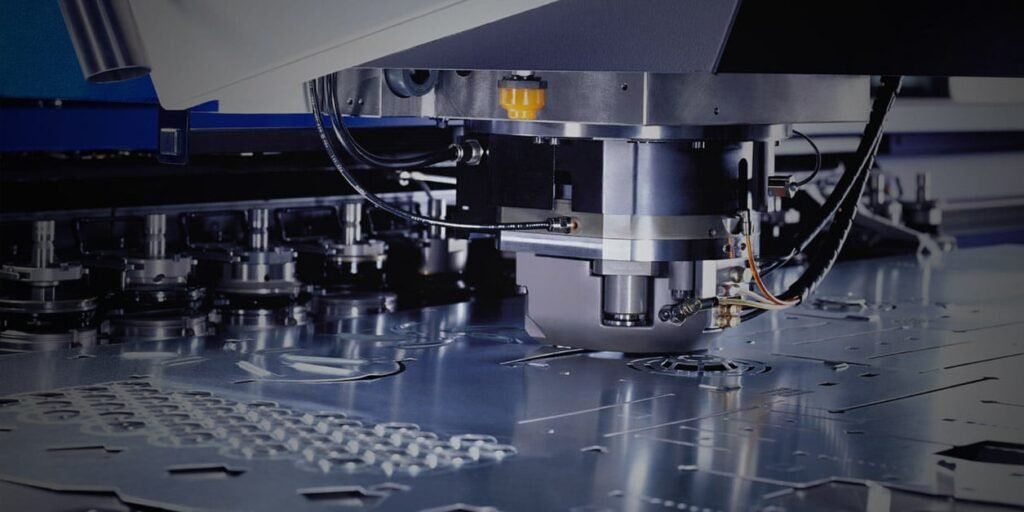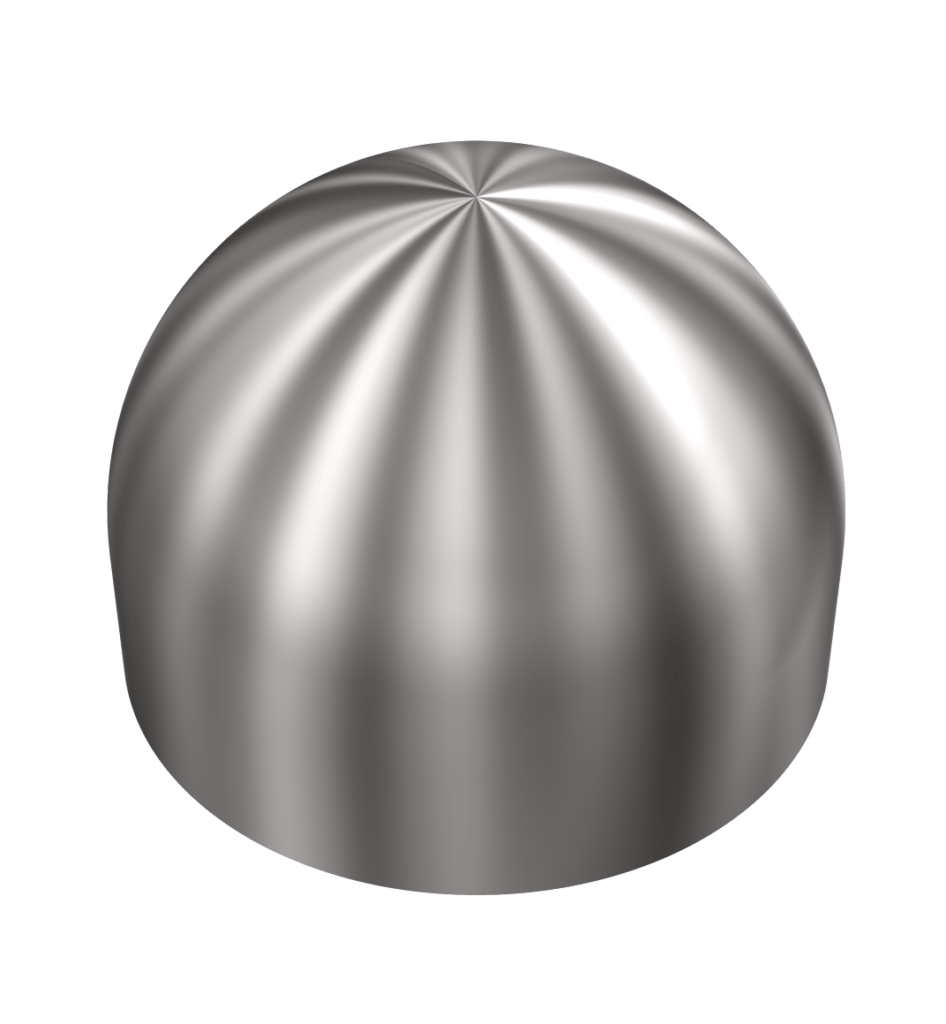
The History of Metal Spinning
Oh, the enigmatic realm of metal spinning – where the fusion of skill and imagination melds molten metal into exquisite masterpieces. Let us journey through time to unravel the captivating saga behind this ancient art form that continues to mesmerize craftsmen and engineers alike.
In days of yore, devoid of sophisticated contraptions and cutting-edge gadgets, adept artisans painstakingly spun metal by hand using rudimentary tools like wooden molds and handheld implements. As the illustrious Thomas Edison once mused, “Genius is one percent inspiration and ninety-nine percent perspiration.” And indeed, those metalworkers possessed an unparalleled work ethic and unwavering commitment. From crafting elaborate vessels to intricate lampshades, they refined their craft through years of dedication and a discerning eye for detail.
As we fast forward to the era of industrialization, metal spinning underwent a metamorphosis with technological advancements. Mechanized lathes and hydraulic presses revolutionized the art form, enabling precision and speed previously unattainable by manual labor alone. This marked a pivotal moment in the annals of metal spinning history, ushering in an era of mass production and endless possibilities. As the adage goes, “Invention is the most important product of man’s creative brain.” And how aptly this sentiment rings true within the realm of metal spinning!
Traditional Techniques vs Modern Technology
The eternal dilemma between age-old techniques and cutting-edge technology in the metal spinning realm is akin to a perplexing choice: Grandma’s coveted apple pie recipe or the instant gratification of a store-bought alternative. Each option has its allure, but only one possesses that elusive magical quality.
Imagine this scene: a skilled artisan toiling away in a shadowy workshop, beads of sweat glistening on their brow as they transform raw metal into a masterpiece using nothing but their bare hands and rudimentary tools. There is an undeniable mystique surrounding the traditional art of metal spinning, an inherent grace in the uncomplicated precision of handmade craftsmanship. As the old adage goes, “Simplicity is beauty,” and nowhere is this sentiment more evident than in the intricate world of metalworking.
Benefits of Metal Spinning
Metal spinning, a mesmerizing and enchanting craft indeed! The sheer delight of shaping various metals with such precision is truly unparalleled. As artisans of metal, we revel in the intricate dance of transforming raw materials into stunning forms that bewitch both the eye and the mind. It’s like a form of sculpting that takes on a whole new dimension!
Furthermore, metal spinning allows us to create seamless hollow shapes that not only look visually appealing but are also structurally robust. A wise craftsman once described metal spinning as a delicate balance between force and finesse, where raw materials gracefully morph into elegant designs. The ability to spin metals such as aluminum, copper, and stainless steel opens up boundless opportunities for innovation in both design and functionality, making it a favored choice across industries from aerospace to home decoration.n
Materials Used in Metal Spinning
In the realm of metal spinning, the choice of materials holds an enigmatic power over the outcome of the final creation. From the timeless allure of brass and copper to the cutting-edge appeal of stainless steel and aluminum, the array is as bewildering as a labyrinth at a metalworking gala. As eminent craftsman Samuel Yellin once cryptically remarked, “The selection of material can either make or break a project. It’s akin to selecting the perfect seasoning for a dish – it should enhance without overpowering.”
Each material brings its own enigmatic essence to the spinning process. Brass exudes a radiant golden glow and is cherished by artisans for its pliability and classic charm. Conversely, stainless steel boasts a sleek modern aesthetic that imparts durability and contemporary flair to spun creations. It’s reminiscent of choosing between an elegant vintage automobile and a futuristic sports car – both possess their own allure within the realm of metal spinning. Ultimately, the right material sets forth an enigma where skilled hands may birth a masterpiece in metallic form.
Tools and Equipment for Metal Spinning
Oh, the mesmerizing realm of metal spinning tools and equipment – a captivating haven for metalworkers adorned with gleaming contraptions and apparatuses that can transform even the most ordinary task into a celestial waltz of innovation. From ancient hand tools steeped in history to state-of-the-art machinery of modern times, the choices are endless when it comes to shaping metal into exquisite forms.
Within the confines of the workshop lies an assortment of tools that possess the power to either streamline your work effortlessly or plunge you into a whirlwind of exasperation. As the enigmatic machinist Richard Feynman once cryptically remarked, “There’s plenty of room at the bottom,” capturing perfectly the essence of this intricate craft. It all boils down to precision and finesse – one misstep with a tool could lead to despair as your creation goes up in flames. But fret not, dear artisan of metal spinning, for along with exceptional tools comes great accountability; armed with a steady hand and a touch of ingenuity, you have the ability to metamorphose a humble piece of metal into a masterpiece that would leave even Michelangelo himself awestruck.
Challenges Faced in Metal Spinning
In the realm of metal spinning challenges, one can’t help but be amused by the peculiar tango between form and function that unfolds on the workshop floor. Imagine this: you’re all set to spin your metal blank, the lathe is primed and ready to go, and just when you think you’ve cracked the code, the material decides to throw a curveball with its mischievous antics. Oh, the delights of working with metal!
Let’s not overlook the eternal struggle against Mother Nature’s wrath – specifically, those pesky vibrations that can transform a serene spinning session into a cacophony of chaos and clamor. As the illustrious machinist Adam Booth once quipped, “Just when you think everything’s in harmony, those vibrations start throwing a party like it’s 1999.” Ain’t that something! So, next time you find yourself embroiled in a metal spinning odyssey, remember: it’s all part of the enchanting allure of this craft.
Applications of Metal Spinning
From the mesmerizing glow of modern lighting fixtures to the intricate details of automotive parts, metal spinning unveils a world of perplexing possibilities. Imagine beholding a magnificent handcrafted copper vase, its curves reflecting light in a burst of brilliance. Little do we know that this marvel began life as a humble sheet of metal, transformed through skilled spinning into its exquisite shape.
In the realm of aerospace, metal spinning reigns supreme for crafting components like missile nose cones and satellite dishes. These vital parts demand strength, lightness, and aerodynamic precision – qualities effortlessly delivered by the art of metal spinning. In the words of visionary engineer Henry Ford: “Quality means doing it right when no one is looking.” Metal spinning embodies this ethos flawlessly, fashioning enduring products that defy time’s relentless march.
Innovations in Metal Spinning
Metal spinning has undergone a transformative journey from its humble origins, with groundbreaking innovations constantly pushing the boundaries of what can be achieved in this craft. One of the most thrilling advancements in recent times is the integration of computer numerical control (CNC) technology into metal spinning. The precision and repeatability that CNC offers have elevated possibilities to new heights, enabling the creation of intricate designs and shapes that were once deemed unattainable. It’s like stepping into a realm where complexity meets simplicity a paradoxical dance of artistry.
Furthermore, progress in materials science has unlocked a treasure trove for metal spinners. From aluminum to stainless steel to titanium, the array of materials available for spinning has expanded exponentially, providing artisans with an abundance of choices to experiment with. As the iconic wordsmith Bob Dylan famously sang, “The times they are a-changin’,” and indeed they are within the realm of metal spinning. With these cutting-edge developments, the future appears luminous for this ancient practice merging tradition with state-of-the-art technology to produce enduring works of art that captivate both visually and functionally. Witnessing how exquisitely-crafted metal pieces can leave an indelible mark across diverse environments be it industrial landscapes or opulent home interiors is truly awe-inspiring.
Future Trends in Metal Spinning
The future of metal spinning is a kaleidoscope of possibilities, shimmering with the promise of innovation and advancement. Like a finely polished brass knob gleaming under the sun’s rays, this industry is on the brink of something truly extraordinary. With technology forging ahead at an unprecedented pace and a burgeoning demand for intricate metal creations, it seems as if we are hurtling towards a horizon as boundless as an endless roll of aluminum foil.
As we hurtle forward into uncharted territory, propelled by the momentum of progress like a lathe whirring at full throttle, one can’t help but be captivated by the enigma that lies ahead in the realm of metal spinning. Picture a world where robotic arms execute intricate spinning tasks with flawless precision and lightning speed, leaving even the most seasoned craftsmen in awe. It’s a vision that challenges our perceptions and defies our expectations a future where dreams materialize into reality before our very eyes.
In this ever-evolving landscape, where innovation reigns supreme and creativity knows no bounds, it becomes clear that the future belongs to those who dare to dream big. The pioneers in metal spinning are trailblazers, pushing boundaries and redefining what is achievable in this ancient craft. So brace yourselves, dear readers, for what lies ahead promises to transform not just how we shape metal but also how we perceive its potential. The revolution has only just begun hold onto your anvils tightly as we embark on this exhilarating journey together.


